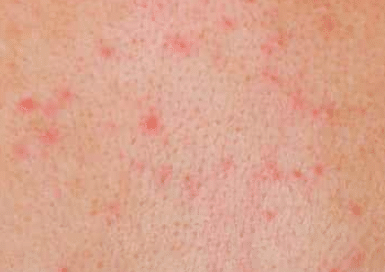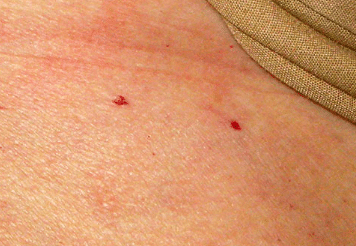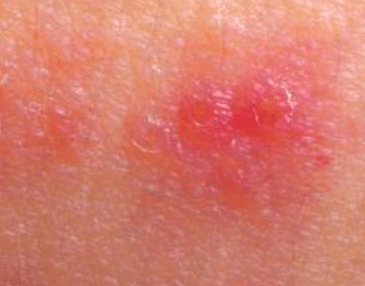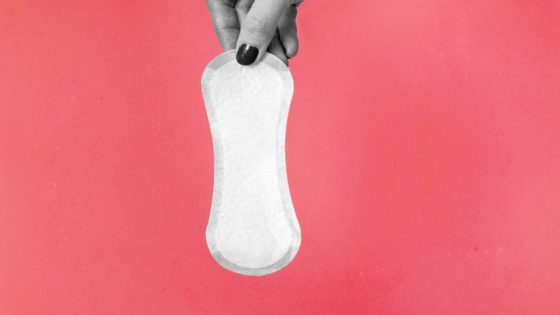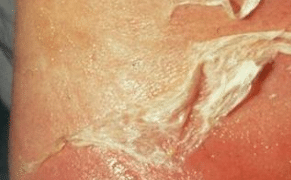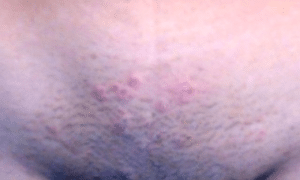Red Spots on breast may result from various causes. Some of them are harmless while others are symptomatic of serious underlying medical conditions that require medical treatment. These spots can appear on different parts of your breast like a nipple, areola, or under the breast. They may or not cause pain, itchy, irritation or other discomforts. Continue reading to explore the signs and symptoms, causes and how to get rid of such spots on your breast.
Signs and Symptoms
It is common to develop single or multiple red bumps on your breast at some point in your life. They may appear while pregnant or during breastfeeding. Most of them are benign and normally clear on their own or after using some home remedies.
However, you are not supposed to ignore persistent spots or those that won’t heal easily. They may result from life-threatening conditions.
Red spots on your breast may be characterized by various symptoms. Some of them include:
- Red and swollen breast that may feel warm.
- Pitted skin especially around the areola and nipple.
- Certain changes on the nipple like flattening, inversion or dimpling.
- Raised bumps that may appear on the nipple, areola, under the breast, or any other part.
- Abnormal discharge from the breast through the nipple openings.
- Flat red marks like bug bites or mosquito bites.
- Itchy or painful mammary glands.
- Hard and painless lump inside the breast.
- Sores that burst open, ooze and form crusting.
- Bumps on the breast that won’t heal easily.
- Pain and other discomforts when breastfeeding.
- Blocked nipples.
- The dry and cracked skin around the breast
The above symptoms vary depending on the underlying cause. Some of the symptoms may appear and disappear after several days while others may be persistent until when the root cause is treated.
Red Spots on Breast Causes
It is important to know the exact cause of red spots on your breast as soon as they appear. It helps to get rid of the problem before developing serious complications. Some of the common causes include the following:
- Allergic Reaction
Some detergents contain harmful chemicals and other substances. Washing your bra or boob tops with such detergents can trigger an allergic reaction on the breast. Wearing clothing made from wool can also cause this problem. An allergic reaction is characterized by red small bumps or rash, itching or dry patches on the skin.
- Insect Bites
Insect bites and stings can also cause red bumps to appear on your breast. Red marks on the breast that are present after waking up commonly result from mosquito or bug bites.
An allergic reaction to mosquito bites can cause raised and itchy bumps to develop on the affected areas. Bug bites are characterized by red marks on the skin that appears in rows and blood stains on the bed sheets.
- Inflammatory Breast Cancer
This is a type of cancer that commonly affect the breast. It normally causes persistent itching, rash or spots, and a burning sensation. The affected breast may finally become red, swollen, warm and tender to touch.
This condition blocks the lymphatic blood vessels that supply the breast with oxygen and nutrients. It may also spread to other areas like the lymph nodes located in armpits or other organs.
- Mastitis
Mastitis is an infection that causes inflammation of the breast tissues as a result of milk build-up. It is common among breastfeeding mothers and may develop due to infrequent breastfeeding, newborn with sucking problem, and poor breastfeeding techniques.
- Psoriasis
This is an autoimmune disorder that causes inflammation of the affected area. It a genetic condition that is inherited from other family members.
Fortunately, it is not contagious and cannot spread from one person to another through skin contact. It causes overgrowth of skin cells with less shedding off and hence providing an ample condition for fungus build up.
- Acne
Acne can develop on any part of your body including breast. When infected, it can become red, swollen and painful. It develops when excessive sebum or oil, dead skin cells, and other debris that block the skin pores.
Excessive production of sebum by sebaceous glands is triggered by hormonal changes during puberty, menstruation, pregnancy, and menopause.
- Cellulitis
Cellulitis is a skin infection caused by a bacteria known as Staphylococcus aureus. It normally affects the subcutaneous layer of the skin. Dry, scaly, and cracked skin on the breast can provide entrance of this bacteria into your body. During the initial stages, it causes red dots on the breast or another part of the body that is affected.
- Mammary Duct Ectasia
Mammary duct ectasia is also known to cause red marks on the breast. It is a condition that develops when the internal mammary glands become thickened, collect, and retain fluids.
This phenomenon can cause blockage of the milk ducts that are followed by red spots and inflammation.
- Skin Diseases
Different skin diseases can lead to red marks or spots to appear on your breast. Some of the conditions include scabies, chickenpox, hives, dermatitis, and psoriasis among others. These skin conditions are also characterized by other symptoms such as itching, irritation, and a burning sensation.
- Pregnancy
There are various changes that take place in your body during pregnancy. For instance, hormonal fluctuations can trigger excessive production of oil by sebaceous glands.
Together with dead skin cells, they can block the hair follicles to give rise to pimples. When infected, the pimples become red and inflamed. They can appear on the face, breasts, and back.
- Fungal Infection
Fungal or yeast infection can also affect your breast. Candida albicans is the common fungus that may affect your breast. Fungi thrive well in moist and warm conditions that may be present in your breast.
It normally causes a red rash to appear on the affected area. This infection is common among breastfeeding mothers due to licking milk that can cause the breast area to become constantly wet.
- Reaction to Certain Drugs
Drug reaction or side effects can cause the red rash to appear on different parts of your body including the breast. Drugs like certain types of antibiotics, fungal dug, and Narcotic pain medication have exhibited this reaction among some patients. The rash normally disappears after stopping the use of such medicines.
- Eczema
This is an autoimmune disorder that can affect any part of your body. When it affects the breast area, it causes dry and flaky skin that is also characterized by small red or brown bumps. Itchy sensation causes an urge to scratch which can cause the bumps to become open, ooze, and form a crusting. Infected bumps can become swollen, red and painful.
- Paget’s Infection
This is a type of breast cancer that normally affects the nipple and areola. The affected area develops red bumps that burst open, ooze and form a crusting.
It also causes different deformation of the nipple that may include flattening, dimpling, and inversion. Abnormal discharge can also ooze from the nipple. When not treated, this condition can also spread to other parts of the breast.
- Piercings
It may look beautiful to have a stud or a small shiny ring on your nipple but this process comes with its own disadvantages especially when proper care is not taken.
Touching your newly pierced nipple with the dirty hand can cause an infection. An infected nipple piercing is characterized by various symptoms like pain, swelling, discharge, and present of a red bump of the affected area.
Red Rash on Breast Pictures
To have a visual understanding of red spots or bumps on the breast, we have included various pictures in this post.
From the pictures, you can clearly see the different parts of the breast that can be affected i.e. nipple, areola, under the breast, between breasts or on the upper surface.
More so, it is evident that the appearance of the bumps varies depending on their causes. Some of the bumps are tiny, little, small, or relatively bigger.
It is also possible to identify some of the symptoms like swelling and redness from the pictures.
Red Spots on Breast no Pain
Not all bumps that develop on your breast are painful, some may have no pain. However, this does not mean that such bumps are harmless. They may be symptomatic to life-threatening like breast cancer that requires urgent diagnosis and treatment.
Red bumps on the breast with no pain can also be red birthmarks or angiomas. They may be present at birth or develop afterward. They are abnormal blood vessels that develop under the skin.
They may increase in size during puberty. However, you can get rid of them using various treatments like surgery, laser treatment, and cryotherapy among others.
Red Rash on Breast while Breastfeeding
The common cause of red spots on your breast during breastfeeding is a breast infection known as mastitis. This infection causes a clogged duct, sore duct, and a tender lump in the breast. This infection occurs when the milk duct is not draining well as a result of infrequent breastfeeding.
The affected breast may become red and tender to the touch. When this problem is not resolved, the surrounding areas can also become inflamed. You may also experience other symptoms like nausea, fatigue, headache, and body aches.
Mastitis infection or plugged milk duct is common among women with abundant milk supply. It is common during the initial weeks of nursing and in winter. Fortunately, there is the various treatment you can use to get rid of the blocked milk duct. They include:
- Applying a warm compress to the affected breast.
- Taking over-the-counter painkillers like ibuprofen and acetaminophen to relieve pain and other discomforts.
- Breastfeeding the baby frequently.
- Keeping hydrated by taking plenty of water and other fluids.
- Sleeping on the side or back to avoid putting pressure on the breasts.
- Wearing a supportive
Don’t hesitate to visit your health care provider if the symptoms persist.
How to Get Rid of Red Spots on Breast
To get rid of red spots on your breast, there are several treatments you can employ. They include using home remedy treatment, medical treatment or visiting your doctor for diagnosis and treatment and shown below:
Home Remedies
To get rid of red spots on your boobs without scarring, there are various natural remedies you can use. Some of them are readily available in your kitchen while others can be obtained from a natural drug store within your locality. They include the following:
- Cold Compress
A cold compress helps to alleviate most of the symptoms associated with the rash on your breasts such as itchy, pain, swelling or a burning sensation. Simply wrap several ice cubes in a clean towel and place it over the rash. Allow it to stay for 5 minutes. Repeat the procedure several times a day.
- Lemon Juice
Antibacterial and antifungal properties of lemon juice help to kill the bacteria, fungi, and another pathogenic microorganism that may be causing red bumps on the breast.
Its citric acid also helps to keep the bacteria at bay. Dilute some lemon juice with water and apply it to the affected area. Allow it to sit for 10 minutes before rinsing off with cool water. Repeat this exercise twice a day.
- Aloe Vera
This natural remedy contains antibacterial and antifungal properties that give it the power to treat red spots on your breast that result from bacterial and fungal infections. Its anti-inflammatory properties provide a soothing effect on inflamed spots.
Simply extract an Aloe Vera juice from a fresh leaf and apply it to the affected area. Let it sit for 20 minutes before rinsing off with cool water. Repeat 3 times a day.
- Apple Cider Vinegar
Apple cider vinegar can help to remove harsh chemicals in your bras that may be triggering an allergic reaction. To use this remedy, mix one cup of apple cider vinegar with a bucket of water. Use the mixture to rinse all your bras and other inner wears you may be using. Hang them to dry in sunlight.
- Castor Oil
The good fats in caster help to provide the energy required to fight micro bacterial and other pathogenic microorganisms that cause a rash on boobs. It also helps to soothe the skin while keeping it smooth. Simply apply castor oil on the affected area twice daily.
- Coconut Oil
Coconut oil has both soothing and healing properties that help to treat various skin conditions like a rash. It relieves itching and other discomforts caused by the red spots. Its greasy nature also reduces the friction under the breast. Simply amply extra-virgin coconut oil on the spots overnight and in the morning.
- Calamine Lotion
Calamine lotion helps to alleviate itching, irritation, and a burning sensation that is associated with red spots. Its zinc content also helps to soothe the skin as well as speeding up the healing.
To use this remedy, clean the affected area and apply a thin layer of calamine lotion. Leave it on and repeat the treatment 3 times a day.
- Tea Tree Oil
Tea tree oil can help to treat breast rash that results from fungal infection. Thanks to its antifungal properties. It also prevents further growth of fungus under the breast.
To use this remedy, simply mix few drops of tea tree oil and olive oil. Apply it to the affected area. Repeat the treatment twice daily. In the evening before going to be and in the morning after taking shower.
- Garlic
The smell or a raw garlic may be a turning point for some ladies. But this ingredient contains various properties that help to fight different skin conditions that may be causing red spots to appear on your breast.
To use this remedy, crush a garlic glove to make a paste and apply it directly to the rash. Allow it to stay for 10 minutes before rinsing with cool water. Repeat this exercise 2 times a day.
- Honey
Honey helps to kill bacteria and fungi that cause the red rash as well as speeding up the healing process. To increase efficiency, mix honey and lemon juice and apply on the affected area of your breast. Leave it for 10 minutes before washing it off with cool water. Repeat the procedure 2 to 3 times a day.
Treatment
Medical treatment can also be used to get rid of red bumps on the breast. Although some are expensive, they are effective and can help to get rid of the spots. They include the following:
- Over-the-counter Drugs
There are various over-the-counter products that can help to get rid of acne on your breast. They contain active ingredients that work in different ways.
Some of them help to kill the bacteria that causes acne while others help to unblock the clogged pores. The common active ingredients in OTC acne products include Benzoyl peroxide, Salicylic acid, Alpha hydroxyl Acids, and sulfur.
- Prescription Drugs
Certain medications can be prescribed by your healthcare provider or a dermatologist to get rid of red bumps on the breast. However, they should be taken as directed by the doctor.
They may also have some side effects on your health. Some of them include birth control pills to regulate hormones and Accutane that speed up the shedding of dead skin cells.
- Laser Treatment
This treatment involves the use of a beam of light to destroy the bumps on your skin. This treatment is effective and does not cause scarring as compared to surgery.
After the bumps are removed, the wound heals naturally by producing new cells that have less or no blemishes. Several sessions may be required if the red spots are severe.
- Surgery
Red spots that are suspected to be malignant moles can be removed through surgery. In this process, an incision is made to remove the bumps or the abnormal cells. This treatment is painful and is normally done under a local anesthesia. The affected area is also left to heal naturally.
- Microdermabrasion
In this process, the skin with blemishes is ‘’sanded” and left to produce new cells that are flawless. Microdermabrasion treatment can be done once a week for several months until when the red spots will disappear completely.
- Cryotherapy
In this treatment, liquid nitrogen is used to freeze the red bumps on your breast. This treatment may require several sessions to get rid of the spots permanently.
When to See a Doctor
Don’t hesitate to visit your dermatology in case of:
- Red bumps on the breast that won’t heal easily even after using home remedy treatments.
- Severe pain, itching, inflammation or a burning sensation that results from the red spots.
- Physical changes on the nipple such as inversion, flattening or dimpling.
- Yellow or green discharge from the nipple.
- Hard lump inside the breast.
- Change in color or darkening of the breast.
The doctor will perform a physical and blood test to determine the exact cause of your condition and prescribe the necessary medication.
Further Sources and References:
- Breast rashes: https://www.healthcentral.com/article/breast-rashes-when-to-go-to-the-doctor
- Rash on breast cancer Pictures: http://www.nationalbreastcancer.org/inflammatory-breast-cancer
- Red Rash breast? https://www.healthline.com/health/skin-disorders/rash-under-breast#infections
- How to get rid of a rash under breast: https://www.top10homeremedies.com/how-to/how-to-get-rid-of-rash-under-breasts.html/3
- Breast infections and plugged ducts: https://www.breastfeedingbasics.com/articles/breast-infections-and-plugged-ducts
- Spots on breast no pain: https://www.phaa.com/breast-fungus-treatment-itchy-fungal-rash-under-the-breast.htm
- Red dots on breast look like bug bite: http://www.heraldnet.com/life/rare-breast-cancer-can-look-like-bug-bite/
- Small spots on breast: http://www.nationalbreastcancer.org/inflammatory-breast-cancer


